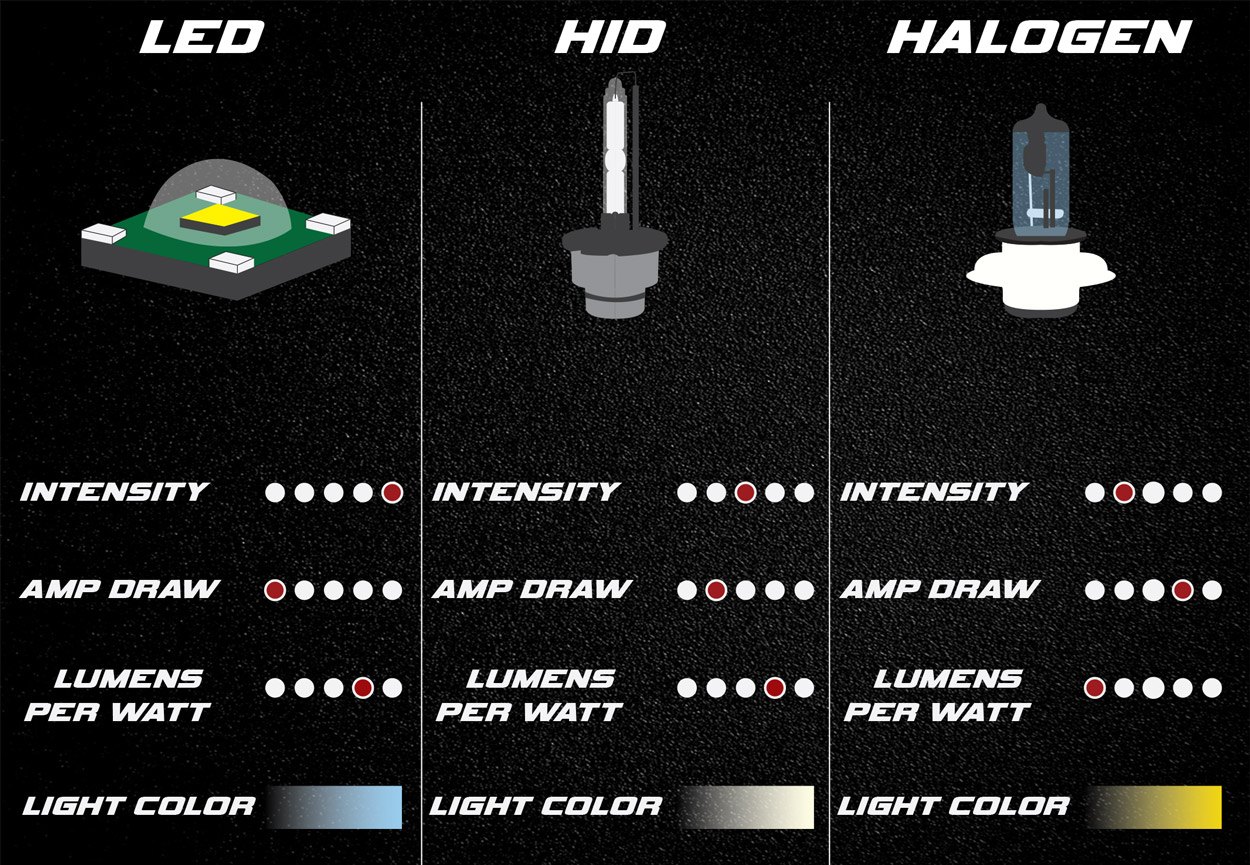
Price: Price can vary based on brand, but HID headlights are typically cheaper than LED headlights.HID headlights can have outer bulbs, inner chambers, electrodes, and locking tabs. Bulb design: LED lights often have bulbs with diodes, locking tabs, and heat sinks.Life span: LED lights might last up to 45,000 hours while HIDs have a life span of around 15,000 hours.Energy use: Both have high energy use compared to halogen, but LEDs are slightly more energy-efficient.Technology: LED lights use electricity while HID uses gas (typically xenon).Both, however, are brighter than traditional halogen lights. Brightness: LED lights can have a brightness of 9,000-10,000 lumens while HID might have 8,000 lumens.

Some of the key features and differences of each include: These headlights can get hot, so some require additional fans or heat sinks to control the temperature. They use semiconductors to transmit energy-emitting photons that create light. LED headlights are light-emitting diode headlights. This type of headlight is ideal for driving at night. HID headlights are premium headlights used for their brightness and ability to last a long time. Some HID lights don't use filament and instead charge xenon through electrodes with high voltage. HID headlights, or high-intensity discharge headlights, are headlights that use a combination of gas and metals to produce a bright blue-white light when the filament receives heat. Until recently, most car manufacturers installed halogen lights in their cars that use nitrogen and argon gases to heat a filament and produce light.
#HID VS HALOGEN DRIVERS#
LED and HID headlights are the bulbs and equipment for cars that help drivers see at night.

SHOP NOW What Are LED and HID Headlights?


 0 kommentar(er)
0 kommentar(er)
